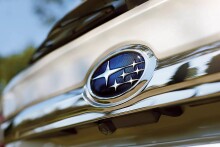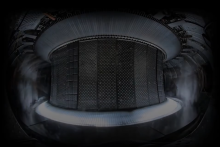Topaz Labs, which makes powerful photo and video enhancement software, just showed off a new AI model that automatically enhances old footage, from your home video collection to archival content that may have degraded over time on traditional media.
In a series of examples, the restored footage appears to be dramatically improved, with increased detail, and reduced noise and artifacts. It's the first-ever diffusion model built for this purpose, and it doesn't require manual inputs to correct the videos it's been fed.
The company says Project Starlight, as the model is called, was built from scratch using with a new model architecture, with more than 6 billion parameters and leverages the latest NVIDIA hardware. For reference, OpenAI's impressive GPT-4o large language model, released in May 2024 with the ability to accept text, audio, image and video as inputs, required 8 billion parameters.
Topaz Labs promises this model will "accurately restore details," and deliver "unmatched detail recovery combined with unparalleled temporal consistency." The company says this last bit is what its new model is all about: enhancing several frames to achieve high quality restoration results without motion artifacts or inconsistencies between frames and objects.
Fully blind restoration: our model automatically denoises, deblurs, upscales, anti-aliases. Simply feed in your footage and watch it transform! No manual tweaks, no parameter tuning.
— Topaz Labs (@topazlabs) February 6, 2025
🎥 Our model can restore footage shot on professional cameras. This example 👇 was filmed using… pic.twitter.com/tmLpZ0Jm0t
Diffusion models work by looking at a high-quality image, gradually adding more noise to it, and learning how it degrades; it also does the opposite, starting with a noisy image and predicting what it looked like before all that noise was added.
Project Starlight will also automatically denoise, deblur, upscale, and anti-alias footage on demand, which suggests you won't need to be a video pro to use it.
The company has been in the imaging software business for over two decades now, with beloved apps for editing and upscaling photos and videos. In 2020, a YouTuber used Topaz Labs' Gigapixel AI and other tools to revive a mid-1890s classic silent short film and present it in 4K 60 fps glory.
How video is restored today
Bringing old video back to life involves several processes, including upscaling, color correction and grading, frame interpolation, damage repair, and audio restoration. There are AI-powered tools to assist with each of these, but humans currently need to oversee it all for best results.
It's worth noting that Tensorpix, a Topaz Labs rival, also offers a machine learning-based video enhancement tool that promises to fix legacy footage. But the company's literature doesn't mention using diffusion models, which are part of a specific branch of machine learning.
How well does Project Starlight work?
In the examples above, you can see Project Starlight doing a great job for the most part. The clip with the astronaut and the other one featuring a red parrot have turned out particularly well. However, the fidelity in the boxing match clip leaves a lot to be desired; there are frames that look like smudged paintings, similar to disappointing results from older AI video generation models.
💡Project Starlight unlocks new possibilities for your creative workflows - resurrecting iconic historical moments in crystal-clear details. From old home videos to professional projects, the future of AI video restoration is here!
— Topaz Labs (@topazlabs) February 6, 2025
We can’t wait to see what you will create with… pic.twitter.com/VUitnPQ1I1
Topaz Labs says you'll be able to restore videos up to 10 seconds long for free, while clips up to 5 minutes in length will max out at 1080p and require you to use credits. An enterprise version will support longer videos and outputs in higher resolution. There's no word yet on whether Project Starlight can run locally, or if it will be integrated into the company's other apps.
If you're interested in trying it out, you can engage with Topaz Labs' posts on X, Threads, or YouTube to get early access.





